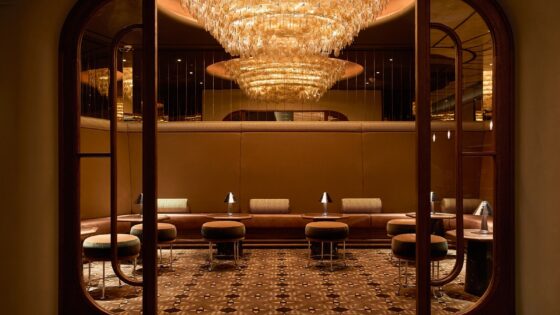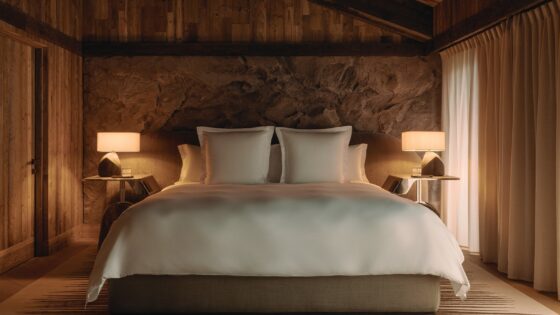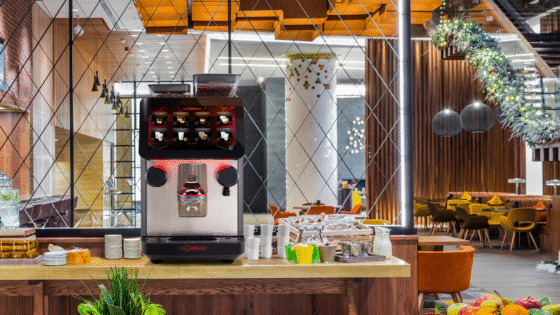The architecture and interior design narrative of Anantara Iko Mauritius Resort & Villas has been inspired by its natural surrounding beauty. As the world daydreams about travel, editor Hamish Kilburn writes…
For luxury travellers already aware of the Anantara brand, they will recognise the brand’s DNA of connecting people to genuine places when checking in to Anantara Iko Mauritius Resort & Villas.

Located on the southeastern coast of Mauritius on Le Chaland Beach, the resort is a tranquil hideaway offering secluded luxury, where design and service work together to providing heartfelt hospitality.
Set around manicured tropical gardens, the new resort shelters 164 guestrooms and suites with eight additional pool villas, as well as a 30-metre ozone-treated infinity pool sits at the heart of the resort, mirroring the iridescent sky and looking out onto the crashing waves beyond the shoreline.
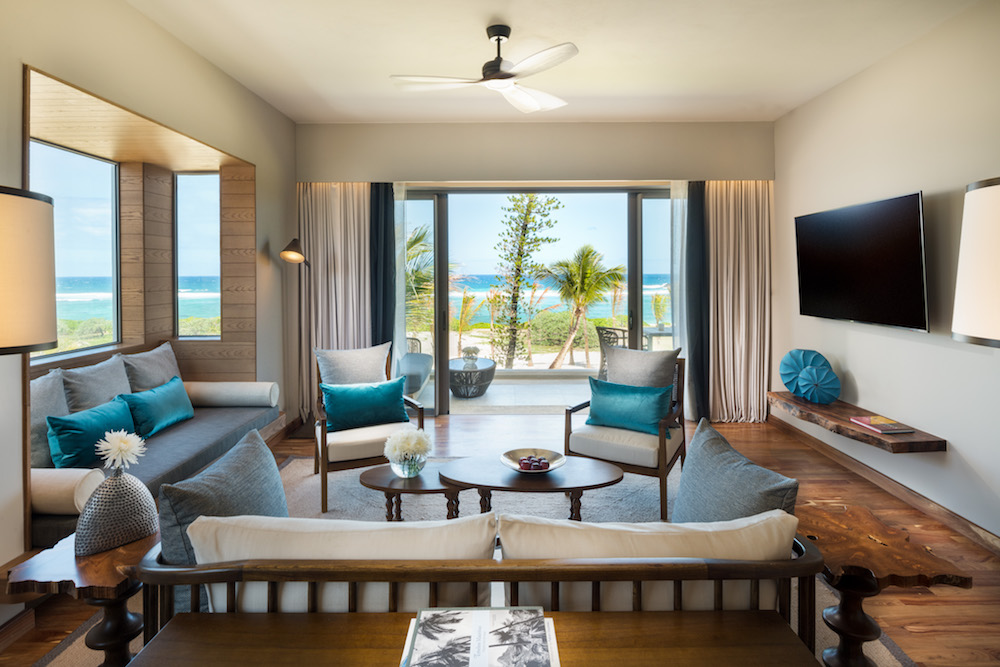
Image credit: Anantara Iko Mauritius Resort & Villas
The interior design scheme reflects the natural wonders of Mauritius, echoing the sparkling shades of the Indian Ocean, golden beaches, amber sunsets, green sugar cane fields and rare corals.
Bangkok based interior designers, Abacus Design Co. Ltd. referenced Mauritius’ natural tropical colour scheme and landscape in native materials when creating the concept. “By mirroring the sea’s movement of ripples, waves and corals, as well as restoring driftwood and recycling materials, we aimed to showcase nature and sustainability at the core of the resort, whilst blending seamlessly with the stunning beachfront environment,” explained Director Samantha Lightbody.
“The measured decision to build the resort a hundred metres back from the beach was taken to lessen the environmental impact on this stunning rugged coastline.”
Australia-based Grounds Kent Architects were responsible for the architecture in collaboration with the Office of Global Architecture in Mauritius. Renewable energy sources have been incorporated into the design to aid sustainable and environmentally friendly operation management, whilst various green initiatives across the resort reduce waste and promote energy recycling. The measured decision to build the resort a hundred metres back from the beach was taken to lessen the environmental impact on this stunning rugged coastline.
The lobby appears to float around a tranquil water garden, where the boundaries between indoor and outdoor are softened, creating a sanctuary-like feel. Upon arrival, the eye is immediately drawn to the ocean, framed picturesquely beyond the infinity pool through a striking stone window.
Indigenous materials honour the warmth and detail of local Mauritian architecture. Distinctive antique basalt stone, used throughout the public spaces in a thoughtful manner, has been reclaimed from demolished buildings on the island. Throughout, traditional roofing materials such as corrugated iron, wood shingle and thatch are incorporated with a modern and refreshing touch.
At the signature restaurant Sea.Fire.Salt, striking driftwood chandeliers draw attention to the high vaulted ceilings in the restaurant and open air bar area, complimented by the gentle sound of waves as backdrop to this refined take on beachfront dining. In addition, the adjacent alfresco courtyard offers an unforgettable feet-in-the-sand dining experience with tables nestled in powdery white sand to root diners in nature as they enjoy flame grilled seafood.
The poolside Karokan bar’s interior design is reminiscent of a traditional sugarcane mill and a replica sugarcane crusher dominates the space behind the bar. Mounted rum barrel heads create decorative walls whilst natural jute soft furnishings and hessian fabrics are illustrative of the materials historically used in such mills, the remains of which are still visible across the island from the rock mills and chimneys that jut out of the Mauritian landscape.
In the all-day dining restaurant, Horizon, exposed wood trusses lend a lofty spaciousness to the eatery, whilst terracotta chenille fabrics pop against its bright ivory wood palette reflecting the ‘beachscape’ below. The restaurant is furnished with teak tables and braided rope chairs whilst ceramic tile mosaics add a splash of colour to the breakfast stations. Indoors, the air-conditioned glass walled wine cellar, 1884, showcases a rich collection of international wines and can house intimate private dinners, whilst the adjoining Zafran can be reserved for larger exclusive private dining events.
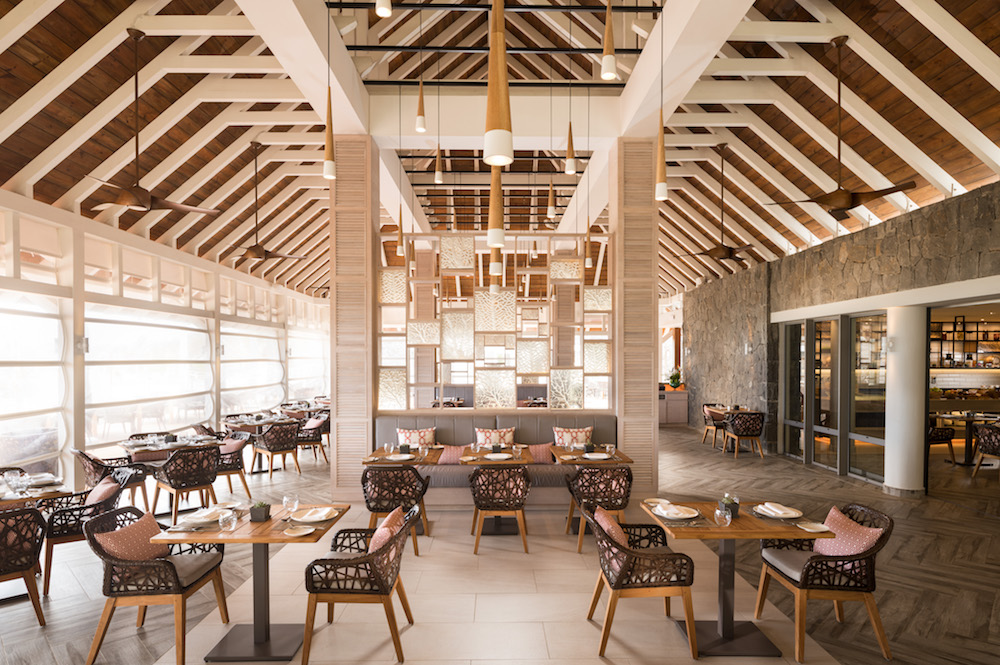
Image caption: Horizon Restaurant | Image credit: Anantara Iko Mauritius Resort & Villas
The accommodation buildings feature blade walls to create protected courtyards which define secluded spaces, provide natural lighting and encourage breezy cross ventilation. Spacious balconies frame views of the ocean or surrounding lush tropical gardens. The interior design of the guest rooms has a contemporary feel with silk soft furnishings chosen in colourways that reflect the soothing blue tones of the ocean and the island’s golden sandy beaches, the Jim Thompson fabrics also providing a nod to Anantara’s Thai heritage. Framed artworks from young local Mauritian photographers depict scenery from the authentic South of Mauritius to complement the minimalist décor.

Image credit: Anantara Iko Mauritius Resort & Villas
A cocooned village of well-being, the Anantara Spa is housed beneath thatch roofs in a secluded tropical garden bordered by a colonnade of trees known as the Almond Allee. The thoughtful design combines tactile elements and comprises of two double treatment rooms and three single treatment rooms, a beauty salon, a traditional Turkish Hammam, two outdoor Thai massage pavilions and a whirlpool. Additional resort recreational facilities include a state-of-the-art fitness centre and a library filled with classic fiction and historical and cultural books of Mauritius.
The overall design of Anantara Iko Mauritius Resort harmonises with both the natural scenery and the history of its location, combining modernity with indigenous design while retaining a true sense of tranquility and escapism.
Main image credit: Anantara Iko Mauritius Resort

